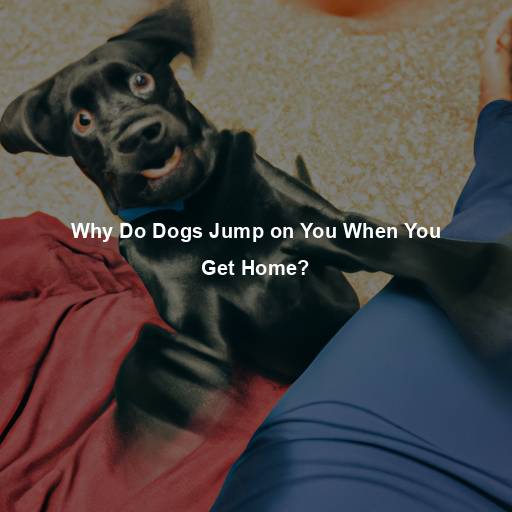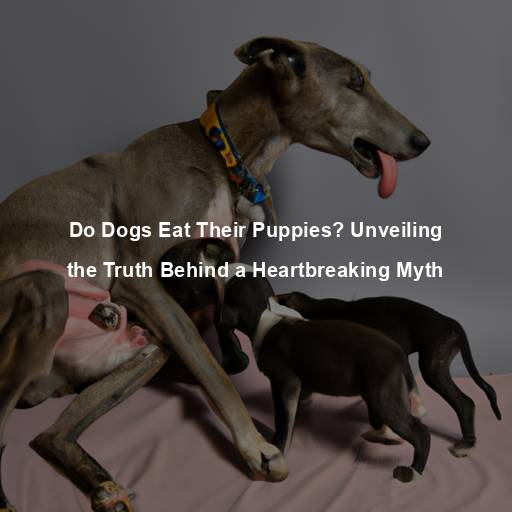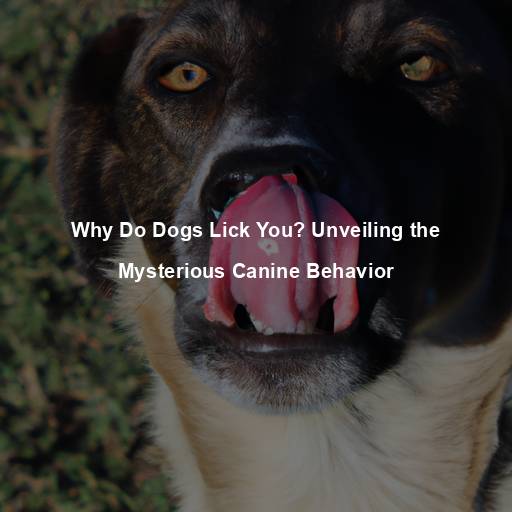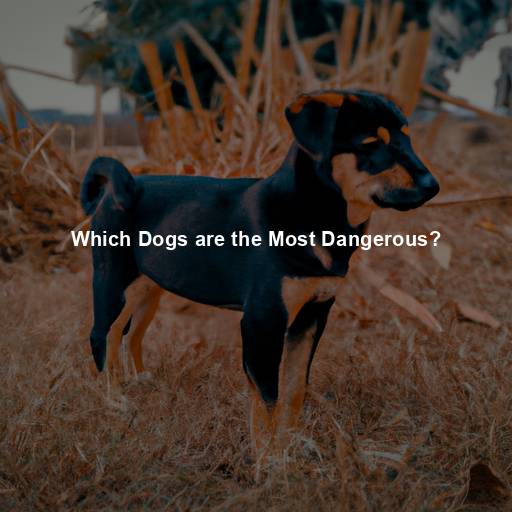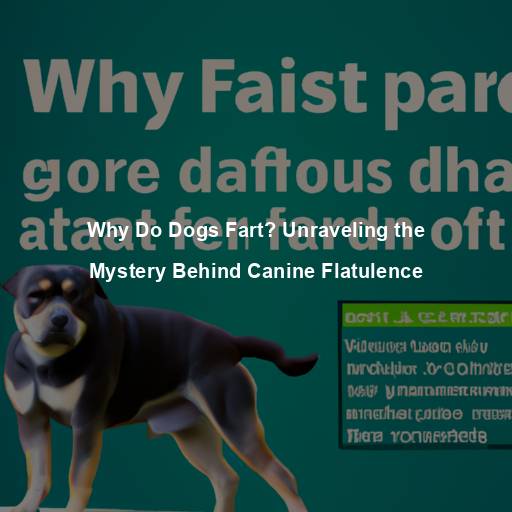Why Do Dogs Jump on You When You Get Home?
Last Updated on November 22, 2023 by Evan
Contents [hide]
- 1 Understanding the Canine Behavior
- 2 Addressing the Jumping Behavior
- 2.1 Consistent Training and Positive Reinforcement
- 2.2 Ignore the Jumping Behavior
- 2.3 Redirect Their Energy
- 2.4 Teach Them to Sit for Greetings
- 2.5 Seek Professional Help
- 2.6 Displaying Loyalty and Devotion
- 2.7 Easing Separation Anxiety
- 2.8 Expressing Joy and Happiness
- 2.9 Bonding and Strengthening the Relationship
- 2.10 Mirroring Your Energy
- 2.11 Seeking Reassurance
- 3 Promoting Positive Greetings
- 4 FAQs – Why do dogs jump on you when you get home?
- 4.1 Why do dogs greet by jumping on people?
- 4.2 Is jumping a sign of dominance?
- 4.3 How can I discourage my dog from jumping on me?
- 4.4 What other techniques can I use to practice appropriate greetings?
- 4.5 Why does jumping on guests become a problem?
- 4.6 Can anxiety contribute to excessive jumping?
- 4.7 Is it wrong to allow dogs to jump on you?
- 4.8 Can training resolve excessive jumping?
Understanding the Canine Behavior
Canine enthusiasts are all too familiar with the vibrant and fervent nature of dogs, especially when their cherished human companions return home after a drawn-out day. A prevalent conduct among our furry friends includes an eagerness to leap up and offer enthusiastic greetings. Although this endearing gesture often evokes heartwarming sentiments, it can sometimes overflow into overwhelming or hazardous territory, especially for vulnerable demographics such as children or the elderly. Thus, it begs the question: what lies beneath the surface of this exuberant canine salutation?
Expressing Affection and Excitement
When your dog jumps on you as you walk through the door, it’s their way of expressing their love and excitement. Dogs are pack animals, and they consider their human family members as part of their pack. Jumping up is their way of saying, “I missed you! I’m so happy to see you”!
Seeking Attention and Validation
Have you ever wondered why your furry friend leaps onto you with such gusto? Well, it turns out that this delightful display of exuberance is actually your dog’s way of craving attention and affirmation from you. Our canine companions are social creatures, thriving on human interaction and connection. In their clever little minds, they have learned that jumping up often triggers a response from their beloved owners, even if that response is less than enthusiastic.
Lack of Training and Boundaries
There is a peculiar aspect to dogs that often leaves their owners utterly perplexed – the act of jumping. While it may seem like an erratic burst of energy, devoid of any rhyme or reason, there is usually a deeper underlying cause. One of the chief contributors to this acrobatic display is the absence of structured training and a clear set of boundaries. Dogs possess an innate intelligence, enabling them to quickly grasp which behaviors merit praise or are permissible.
Eager to Engage in Play
For some dogs, jumping on their owners is a way to initiate playtime. Dogs are social creatures, and they often use physical contact, such as jumping or play-bowing, to signal their desire for play. If your dog jumps on you when you get home, it may be their way of saying, “Let’s play”! They may be seeking your attention and hoping for an interactive and energetic play session.
Attention-Seeking Behavior
In some cases, dogs may jump on their owners as a way of seeking attention when they feel neglected or bored. If your dog spends long periods alone or doesn’t receive enough mental and physical stimulation throughout the day, they may resort to jumping up to grab your attention. This behavior can be a sign that your dog needs more exercise, mental enrichment, or companionship.
Reinforcement from Past Interactions
Sometimes, dogs jump on their owners due to past interactions that unintentionally reinforced this behavior. For example, if your dog received attention, petting, or treats in the past when they jumped up, they may continue to do so in the hopes of receiving the same rewards. It’s essential to be consistent in your responses and avoid inadvertently reinforcing jumping behavior.
Energetic Discharge
Ever wondered why your furry friend goes soaring through the air? Well, it turns out that jumping is more than just a random display of enthusiasm for our canine companions. Dogs, being the high-energy creatures they are, utilize this aerial maneuver to unleash their boundless energy or excitement. However, fret not, as there is a solution!
Seeking Eye Contact and Physical Interaction
When dogs jump on their owners, they often aim to make eye contact and establish physical interaction. Dogs rely heavily on body language and facial expressions to communicate. By jumping up, they bring themselves to eye level, enabling them to better read their owner’s expressions and communicate their own needs more effectively.
Addressing the Jumping Behavior
Discovering the fundamental causes that prompt your canine companion to engage in their exuberant airborne antics is of utmost importance, but it is equally imperative to implement strategies that effectively quell this behavior. Brace yourself as we unveil a repertoire of practical suggestions to assist you in taming the tumultuous leap of your beloved four-legged friend.
Consistent Training and Positive Reinforcement
Consistency is key when it comes to training your dog. Teach them an alternative behavior, such as sitting or offering a handshake, when they greet you. Reward and reinforce this desired behavior with treats, praise, and affection. Consistent positive reinforcement will help your dog understand what is expected of them and encourage them to greet you calmly.
Ignore the Jumping Behavior
When your furry companion excitedly greets you with a sprightly leap, you might consider employing a counterintuitive strategy. Rather than engaging with exuberance, try a more enigmatic approach. Resist the temptation to lock eyes, pivot your body away, and gently fold your arms in a mysterious embrace. And, when those precious paws finally touch solid ground, lavish your four-legged friend with the tender affection they crave.
Redirect Their Energy
Preparing to enter your humble abode? Take a moment to indulge in a playful session with your furry friend and get their excitement levels down a few notches, preventing any leaping shenanigans. To truly channel their boundless enthusiasm, engage them in mind-boggling activities like solving puzzle toys or engaging in training sessions. This will not only keep them entertained but also mentally stimulated, ensuring a harmonious transition into your home sweet home.
Teach Them to Sit for Greetings
Bringing a harmonious atmosphere into your home can sometimes feel like chasing a mystery. Yet, fear not, for taming your furry friend’s exuberant jumping can be achieved with patience and persistence. Begin this enchanting endeavor by guiding them to sit and stay upon your arrival, unfolding the magic in their obedience. Practice this captivating ritual in settings free from distractions, gradually raising the bar as you challenge their focus.
Seek Professional Help
If your dog’s jumping behavior persists despite your best efforts, consider seeking help from a professional dog trainer or behaviorist. They can assess the underlying causes of the behavior and provide you with tailored strategies to address it effectively. Professional guidance can be invaluable in modifying your dog’s behavior and strengthening your bond.
Displaying Loyalty and Devotion
There’s something captivating about the indomitable loyalty and unwavering devotion that dogs possess in their very core. That thrilling moment when they eagerly bound towards you, their paws barely touching the ground, is an exuberant display of their profound affection and yearning to express just how deeply they care. It’s as if they possess an innate sixth sense, an uncanny ability to perceive the emotions coursing through their human counterparts, and their exuberant greeting serves as a heartwarming gesture to offer solace, comfort, and unwavering support. In their own unique way, they’re determined to let you know that come rain or shine, they are right there by your side, ready to be your unwavering companion through the highs and lows of life.
Easing Separation Anxiety
For our furry friends who undergo the struggles of separation anxiety, a peculiar coping mechanism takes the spotlight: the classic dog jump. This leap of devotion is an expression of their inner turmoil, an attempt to bridge the void between fur and human. By soaring towards their returning owners, these canines seek solace in the warmth of physical contact, finding reassurance that their cherished human is indeed back in their lives.
Expressing Joy and Happiness
There is a certain enchantment in the way dogs embrace the present, reveling in moments that others may overlook. A mere glimpse of their owner can ignite an effervescent happiness within them, resulting in an exuberant leap of pure delight. Their innate capacity to derive joy from life’s simplest wonders is truly extraordinary, and when they bound towards you with uncontainable excitement, it is their endearing attempt to convey that boundless joy, intertwining their emotions with yours.
Bonding and Strengthening the Relationship
The intimate dance of physical contact is a mysterious symphony that effortlessly orchestrates the unbreakable bond between humans and their canine companions. The rhythmic leap of a dog, an enchanting display of sheer vitality, is but a simple plea for an embrace, a yearning for that ethereal connection. In this intricate choreography, their fervent leaps are not mere actions, but profound declarations of unity, forging an unspoken alliance founded on heartwarming devotion. They are whispering, through their boundless energy, “Together, we stand as an unwavering force, an impenetrable fortress of love and loyalty”.
Mirroring Your Energy
Dogs are highly sensitive to the energy and emotions of their owners. If you come home feeling energetic and excited, your dog is likely to mirror that energy and enthusiasm. They pick up on your emotions and respond accordingly. Jumping up and expressing their excitement is their way of joining in and reflecting the positive energy you exude.
Seeking Reassurance
It’s a perplexing behavior when our furry friends jump up on us, but their intentions may not be as straightforward as they seem. It turns out that dogs may resort to this burst of energy as a means of seeking comfort and security. Whether they’ve encountered a stressful situation or are simply missing you during your absence, their jumps serve as a plea for reassurance and protection. So, next time your pup springs into action, remember that there may be a deeper reason behind their bouncy display.
Promoting Positive Greetings
Understanding and acknowledging the underlying emotional motivations behind your dog’s jumping behavior is key in finding more appropriate and controlled ways for them to greet others. Consider these extra tips to help guide you in achieving this goal:
Consistency is Key
Consistency is paramount when it comes to training your dog. Ensure that everyone in your household is on the same page and follows the same rules and guidelines for greeting your dog. Inconsistency can confuse your dog and make it more challenging for them to understand what is expected of them.
Teach an Alternative Behavior
When it comes to our furry friends, it’s important to set them up for success in social interactions. Instead of resorting to jumping, let’s guide our dogs towards more appropriate behaviors, like sitting or offering a friendly paw. By using positive reinforcement methods, such as treats and praise, we can effectively communicate to our dogs what behaviors we find desirable. Consistency is key here, so make sure to reinforce these alternative behaviors during greetings to help them grasp the concept.
Manage the Environment
Set your dog up for success by managing the environment during greetings. For example, you can keep a leash on your dog when you come home and use it to guide them into a sitting position. This can help prevent jumping and provide you with better control over their behavior.
Seek Professional Assistance
If the sight of your dog leaping up in excitement has you at your wits’ end, or worse, if their exuberance poses a threat to your wellbeing, it might be time to reach out for expert assistance. By enlisting the support of a skilled dog trainer or behaviorist, you can gain access to a tailored game plan designed explicitly for your unique set of circumstances. With their wealth of knowledge and tested techniques, these professionals have the power to revolutionize your dog’s conduct in ways you never thought possible.
Exercise and Mental Stimulation
Taking care of your four-legged companion requires more than just providing the basics. It’s essential to give your pooch the right amount of physical exercise and mental challenges to keep their wagging tail in check. By ensuring that your furry friend gets plenty of physical activity, they’ll be more likely to channel their excitement in a calm manner. Engage in stimulating activities like refreshing walks, fun play sessions, and interactive toys to keep their minds and bodies active.
Reinforce Calm Behavior
Building positive associations and promoting desirable behavior in our furry friends is paramount. When our beloved canines approach us with grace and composure, it is our duty to acknowledge their efforts wholeheartedly. By celebrating their calmness and showering them with attention, praise, and delectable treats, we create a harmonious environment that encourages refined and courteous greetings. Show your four-legged companion the value of serenity, and watch as they respond with impeccable manners and unwavering poise.
FAQs – Why do dogs jump on you when you get home?
Why do dogs greet by jumping on people?
It’s no secret that dogs have a unique way of expressing their joy and enthusiasm when they see familiar faces – by jumping! This exuberant display of affection is their way of communicating how thrilled they are to see you. While it may seem overwhelming at times, remember it stems from their genuine excitement and happiness in reuniting with loved ones. So the next time your furry friend leaps towards you, embrace the burst of energy and relish in the warm welcome!
Is jumping a sign of dominance?
There is an intriguing twist to the age-old assumption about dogs and their notorious jumping habits. Surprisingly, it appears that this behavior is not solely rooted in the domain of dominance, as commonly believed. Rather, it is a product of their adaptable nature, serving as a means to seek attention and shower affection upon their beloved human counterparts. Instead of a power play, jumping seems to be a delightful way for our furry companions to establish a connection and initiate physical contact with their adoring owners.
How can I discourage my dog from jumping on me?
When it comes to dealing with your dog’s enthusiastic leaps upon your arrival, it’s crucial to establish a consistent training routine that focuses on providing them with alternative behaviors. By disregarding their jumping and only acknowledging them when they maintain all four paws on the ground, you’re conveying the message that calmness yields attention and affection. Offering treats or verbal commendations for exhibiting composed and controlled behavior further reinforces this new greeting protocol. Additionally, teaching your furry friend commands like “sit” or “stay” can effectively redirect their exuberant energy towards a more suitable way of welcoming you.
What other techniques can I use to practice appropriate greetings?
Training your furry companion to exhibit a specific behavior, like sitting, upon your arrival home, can prove remarkably fruitful. Employing this technique, you can condition your dog to associate this behavior with attention and rewards, thereby reinforcing their understanding of polite greetings. Encouraging others, such as guests or family members, to adhere to the same rules can further enhance consistency. For optimal results, expose your dog to controlled encounters with unfamiliar individuals to refine their greeting skills.
Why does jumping on guests become a problem?
When it comes to our furry friends, it’s important to remember that not everyone welcomes an over-enthusiastic hello. Jumping might seem harmless, but for certain individuals like children or the elderly, it can be quite a jarring experience. To ensure harmony between your dog and your guests, it’s crucial to teach your pet the art of good manners. By doing so, you’ll create a positive and safe environment for everyone involved.
Can anxiety contribute to excessive jumping?
Yes, anxiety and overexcitement can contribute to excessive jumping behavior in some dogs. If a dog becomes excessively anxious or agitated when their owner arrives home, they may resort to jumping as an outlet for their emotions. In such cases, it’s beneficial to address the underlying anxiety through training, desensitization exercises, and, if necessary, seeking guidance from a professional dog trainer or behaviorist.
Is it wrong to allow dogs to jump on you?
Allowing dogs to jump on you is a personal decision, but it’s generally recommended to discourage this behavior. Although it might be cute and endearing when dogs are small, it can become problematic as they grow larger and stronger. Inconsistent boundaries can confuse dogs, making it harder to control their jumping behavior in various situations.
Can training resolve excessive jumping?
Yes, training can certainly help resolve excessive jumping in dogs. Consistency, positive reinforcement, and patience are key when teaching your dog alternative behaviors. With proper training and reinforcement, your dog can learn to greet people calmly and politely without the need for jumping.

